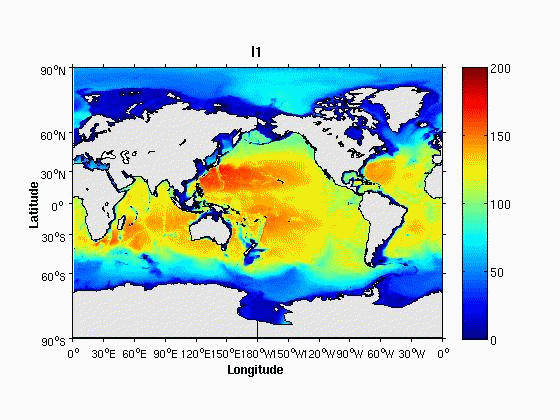Abstract's details
Geographical and temporal variability of internal tides eigen-modes characteristics
Event: 2014 Ocean Surface Topography Science Team Meeting
Session: Tides, internal tides and high-frequency processes
Presentation type: Poster
Global climatologies of average temperature and salinity profiles are used to compute maps of internal tides eigen-modes characteristics. These climatologies are based on measurements (World Ocean Atlas 2009), outputs of numerical models (NEMO at 1/4° and 1/12°) and outputs of numerical models run with data assimilation at 1/4° (GLORYS). We present global atlases of the wavelengths of the first three eigen-modes and their intra-annual variability. The knowledge of the internal tides wavelengths is necessary to extract the coherent signal from along-track altimetric data. Our presentation also includes maps of the surface elevation amplitude linked to each mode, which is an important information in this framework, and maps of the depth of the maximum of velocity profiles that are discussed in relation with the pycnocline and water column depths. A focus is made on the Bay of Biscay and Indonesian Seas.
[This study is part of the OSTST MICSS-II (Multisensor Impact assessment in Coastal and Shelf Seas II) project (PIs: P. De Mey and F. Birol) funded by CNES/TOSCA.]
Figure caption: Global map of the wavelength of M2 internal tides first baroclinic mode (in km) based on GLORYS climatologies.

Back to the list of abstract[This study is part of the OSTST MICSS-II (Multisensor Impact assessment in Coastal and Shelf Seas II) project (PIs: P. De Mey and F. Birol) funded by CNES/TOSCA.]
Figure caption: Global map of the wavelength of M2 internal tides first baroclinic mode (in km) based on GLORYS climatologies.